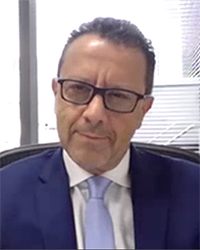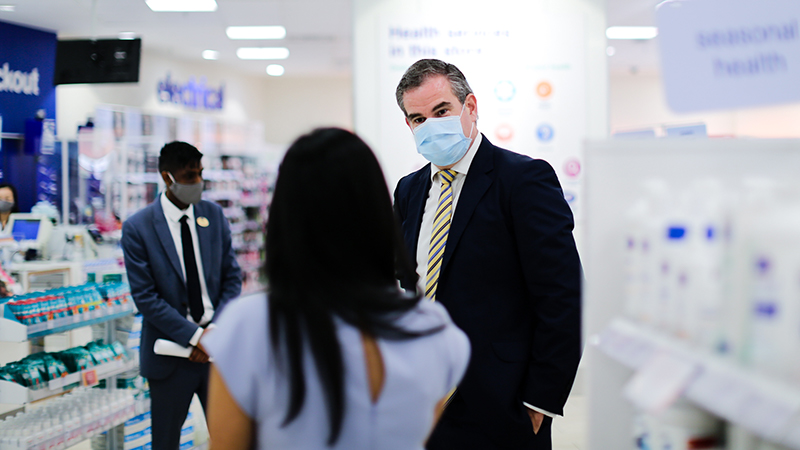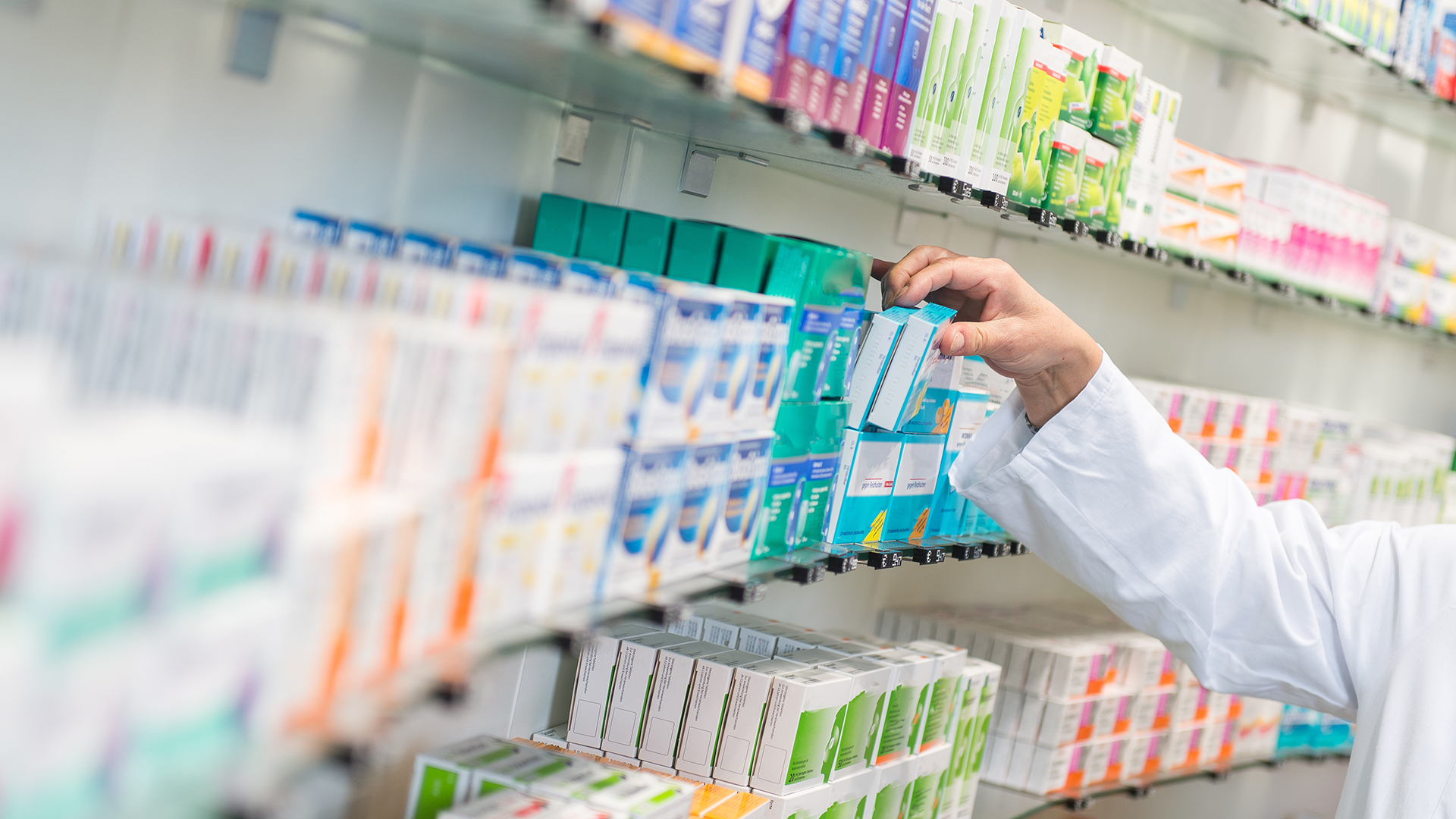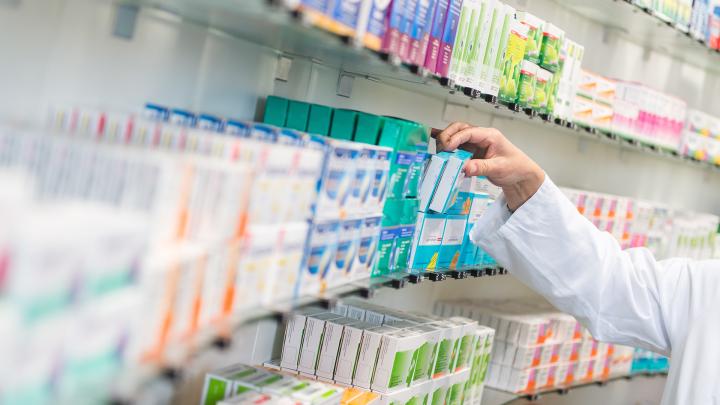It might feel like we’ve been living through the COVID-19 pandemic for years, but it’s only been six months since the world was brought to its knees by the novel coronavirus.
For WBA pharmacy teams across the globe, those six months have brought many challenges but also countless moments of human connection, pride and triumph. There never has been more need for the unique role that community pharmacy plays in protecting and enhancing public health.
We brought together four WBA pharmacy leaders – Marc Donovan, chief pharmacist for Boots UK; Rina Shah, group vice president of Pharmacy Operations for Walgreens; Giulio Burzacca, managing director for Alphega Pharmacy, and Jennifer Powers, senior manager of category development for WBA International Retail – to reflect on how their respective parts of our global organization responded to the pandemic and to discuss the shared learnings that can help prepare us for what’s to come.
 Marc Donovan:
Marc Donovan:
It’s certainly been a challenging few months – not only for our teams, but for the communities we serve, all across the globe. We’ve seen the impact of COVID-19 across every part of our business, but this crisis has shown me once again, how amazing our pharmacists and their teams are. One of my favorite stories is from a Boots pharmacist called Emma, who ran a virtual quiz night for a 96-year-old patient of hers every Thursday evening after work while he was in lockdown, as he had no family. I’ll remember that story, I’m sure, until I retire, but there are lots of others that our teams have been involved in across WBA.
And, of course, sadly, the pandemic is not over. It may well have passed its peak in the first wave here in the UK, but we now enter a new phase, a new normal, not just for Boots, but for the pharmacy profession as a whole.
 Rina Shah:
Rina Shah:
Definitely. I think so much has changed, as you mentioned, Marc. We’ve had to completely shift how we deliver care – offering new digital solutions, enabling social distancing parameters in our stores, putting in plexiglass shields to help protect our customers and our patients. And it’s even changed the basics of how we interact with patients through the drive-thru. Many of our patients were nervous about coming into the store, so our pharmacists, technicians and our front-of-store teams did an incredible job of pivoting and making vitamins and health and wellness products available through our drive-thru so people could get the essentials they need.
But I think the most incredible way we’ve responded has been launching COVID-19 testing. We had never had a testing program like this, and there were still so many questions about the virus itself when we started rolling it out. But we saw pharmacists just raise their hand and say, “How can I help? What can I do to learn?” Now, we’ve created a service for communities across the nation so that they can get tested for COVID-19. It reminds me of when we started doing immunizations, and it’s great to see the profession just continue to expand scope.
 Jennifer Powers:
Jennifer Powers:
Initially we had so many questions about how we could keep our team members and customers safe. And so it was really helpful in the beginning, being able to share what other areas of the business were doing, so that we could leverage that and learn from each other in terms of best practices.
But from an international retail perspective, so much of what our teams can do in the market and in the country is dependent on the country guidelines. And each market is very different, depending on what those regulations are.
There are really two areas that come to mind that really showcase the value of pharmacy and the role we have to play. The first is around the role pharmacy can play in preventive health, which is so important at this time when there are barriers to traditional healthcare such as visiting your general practitioner. In our markets this has particularly shown itself through opportunities with flu and other routine vaccinations. So both in Mexico and Norway, for example, these are two markets that launched an immunization service just this past season, which certainly opened up opportunity for how we can help serve the community moving forward.
In Mexico, there is an overall low vaccination rate, especially for adults. So Farmacias Benavides, our pharmacy chain in Mexico, was at the forefront of launching an education campaign to help customers understand the value and need for vaccination. And because of a pilot that was launched just this year, we are now able to expand that to more pharmacies that have clinics.
In Norway, the legislation was not where it was in the U.S. or in the UK, where pharmacy-led vaccination service has become part of the norm. But that legislation has changed, which led to an expansion of our immunization program there. Also we’re hopeful that this year, in efforts to help cover more customers, pharmacists will be able to vaccinate for the flu without patients having a prescription from their physician. So I think, due to the pandemic, we are seeing not only changes in our pharmacy, but also changes in legislation around preventative health.
The second area that comes to mind is how pharmacists are becoming a kind of beacon for accessible health expertise. Across our international markets, we are seeing a decline in general practitioner visits, for a number of reasons. It may be that patients are hesitant to go into a medical office because of a perceived risk of exposure to the coronavirus, or that doctors have been redistributed to help with the peak of COVID-19, which has meant postponing some nonessential appointments . What that means for our customers is that there’s a growing need for a credible, local healthcare source that they can turn to. And oftentimes, that has been our pharmacists,
Take Thailand, which historically has been a beauty-led market for our business. We do have pharmacists in our stores, but they’re used in a different way. In response to the pandemic, they launched a phone line for customers to contact the pharmacist and have those one-to-one conversations to help clarify some of the confusion and some of the information that they needed, but they didn’t have access to. In my view, this is a market where pharmacists expertise could be utilized more, so the pandemic has definitely presented an opportunity to show the value that pharmacy can bring.
Giulio, I’d love to hear what you’ve seen across the European markets, because I know Europe has been at the forefront of the pandemic, and I’d like to know what you've experienced in your stores.
What’s the superpower that makes WBA pharmacists so special? Our leaders discuss:

Giulio Burzacca:
There are a lot of commonalities in what everyone has said and gone through. As you know, Alphega is a network of independent pharmacies, with more than 7,000 members across 10 countries in Europe. As the coronavirus spread across Europe, our teams were focused on how best to continue to provide healthcare services to all our patients.
The pharmacy really became the first point of contact, and initially we saw a change in the dynamic of what we were selling. We saw incredible increase in demand for cold and flu and paracetamol-based products, but also thermometers, sanitizers – categories that normally were not really a strong point in our pharmacies. We also saw that some of our patients, especially those who were on chronic medication, were rushing to the pharmacy to stock up because of course they were worried about the possibility of a disruption in the supply chain and availability of products.
We also saw changes in regulations, with very quick approvals of expanding services.
I think it’s also an opportunity for us to recognize our colleagues in Alliance Healthcare - who Alphega are also part of. Many colleagues there also went above and beyond to ensure the medicine supply chain was maintained throughout the pandemic crisis. Overnight we saw business models adapt and colleagues from across warehouse, logistics and services centers work together to respond to the increased demand for health care products, including new items, such as face masks. During the peak of the crisis Alliance Healthcare drivers were making up to four deliveries a day to pharmacies. For many, they’re the unsung heroes in our industry.
Donovan:
I think there are some real common threads out there, showing how the pandemic crisis has encouraged regulators and professional bodies across all of our markets to accelerate vaccination programs, but we’ve also seen an acceleration of digital changes. We’ve certainly seen more of our pharmacists embrace digital technology and have consultations online. I know that’s something that you do in Walgreens, quite a lot, Rina, but it’s relatively new, actually, for the UK to have pharmacists providing advice digitally.
We’ve had approximately 100 pharmacists who couldn’t work because of what we call “shielding” here, meaning they are particularly vulnerable to the virus for any reason. So they couldn’t work in our stores, but they put their hands up and stepped forward to support the National Health Service (NHS) 111 Triage Service, sharing their expert advice over the phone, and helping to make a big impact on those who need it most.
Right at the beginning of the pandemic, there were lots of people who were scared and uninformed and feeling anxious about what was happening. But our pharmacists were able to provide that empathy and advice over the phone, as well as through virtual face-to-face consultations, and in person in our pharmacies.

Shah:
As I think we all experienced, at the beginning of the pandemic, there wasn’t a lot of information. And one of the challenges was that we had 27,000 pharmacists across the U.S., in communities that all were receiving different information, and people were looking to the pharmacist as a trusted resource to be able to navigate the next step. And because of that, we needed to arm our pharmacy teams with the most relevant information.
In partnership with our chief medical officer, Dr. Kevin Ban, we made sure to get information out to our pharmacy teams on a consistent and regular basis, and base what we do at Walgreens off of the Centers for Disease Control and Prevention (CDC). And that helped tremendously. In addition to that, we had a WBA COVID global call that also helped to ensure we were getting best practices from all of you. We were able to set up a regular cadence of communication with our field leaders and pharmacy teams and answer a lot of the questions that were coming from customers and patients.
That’s something we still continue to tackle, because there’s always new information that’s coming up.

Burzacca:
We also had to take quick action and put together all of the elements in incredibly fast-moving processes, to allow all of our members to get access to innovation and digital tools. At first, we had to get PPE and all of the essential elements to protect the staff in the pharmacies, so they could work in a more protected environment with proper social distancing: the signs, the one-way systems for the customers to navigate through the stores, all of the posters. The other thing was also to immediately offer our Alphega member staff essential worker IDs, which allowed them to use public transportation and access schools for the children of essential workers. We also focused on the mental health and distress that the situation was causing for the staff, having our business consultants calling frequently to check how the people were doing, giving moral and psychological support.
At the same time, we were quickly developing tools to help our pharmacies adjust their services. Just to give you an example, in Romania and Czech Republic, we put together an online ordering system in only seven days, allowing our pharmacists to give their patients the possibility to order medicines online.
Donovan:
That’s incredible. I think it’s clear from all of our examples that community pharmacy is not just about supplying medicines. We’re perfectly placed to provide accessible, simple solutions amid the growing and concerns and pressures on healthcare systems all across the world, all across the markets that we play in. So going forward, how do we create new services to build those relationships with our patients and an offer beyond the supply of medicines, opportunities for high-quality health care, better patient outcomes?
Powers:
Across all of our markets, we’ve shifted our services to look at the lifetime health journey of our patients. So, what do we see as far as preventive medicine maintenance and acute care, and how can we as a pharmacy be part of the solution? We’ve structured the health services that we offer today into those buckets, and then we look for where there are gaps specifically related to COVID-19.
For example, we can offer tele-health solutions, but it’s not just about how can we bring care to the comfort of someone's home, but also allow them to navigate a chronic illness throughout their life – how can we be really part of their journey every step of the way? The part we have to play is really moving away from dispensing and becoming part of the healthcare team, not only for the customers and the patients that we serve in the community, but for the health systems that the role of pharmacy supports.
Donovan:
Absolutely. In the UK, we’ve been thinking we can play a bigger role in primary care, recognizing the NHS will be under extreme pressure into the winter period. And I think that will take some real radical thinking and collaborative work. Rina, how bold a change do you see in your area and in Walgreens as you look ahead?
Shah:
I think Jennifer hit earlier on some of the acceleration and change that is occurring on the regulatory front to help allow our pharmacists to provide services that are beyond just the dispensing of medication. In the past couple of months, we’ve seen some states permitting pharmacy technicians to administer immunizations under the supervision of our pharmacists. We have a handful of states where our pharmacy affairs team is working to help demonstrate the value of having more educated professionals able to administer vaccines, understanding that there’s going to be this big influx.
Having techs able to administer vaccinations is a step in the right direction, so that we can make sure that our pharmacists are focused on providing and counseling our patients while our technicians can help administer some of these other services. As we speak now, 450 of our pharmacy technicians for the very first time are being trained in how to vaccinate.
Donovan:
You know, if I rewind a year, I would never have thought 2020 would be the year that pharmacy technicians would be trained to vaccinate.
Shah:
I think people are starting to see, OK, if I have 300 million Americans I need to vaccinate when we get a successful COVID-19 vaccine, even with all of our trained individuals, we still won't be able to vaccinate the entire population. What else can we do? And we have a solution right in front of them. Our technicians who have piloted this have done an incredible job, so those proof points have helped dramatically.
Everyone is playing a different role than they have before. We have our pharmacists proactively calling senior patients just to make sure they’re taking care of their medications, to proactively manage that care and to remind them to schedule their appointments with their physicians as they need to, because right now, many other healthcare professionals don’t have the capacity to do that.
You know, listening to everyone today, it’s clear to me that our mission and our purpose for WBA really came to life these past months. We are here to help ensure that our patients and our customers live healthier lives, and everyone across the globe rallied so that we can actually be able to live that. It has made me so proud of working for this company, because we were able to embody that throughout this global organization, and our pharmacists were able to deliver that care on a daily basis.

